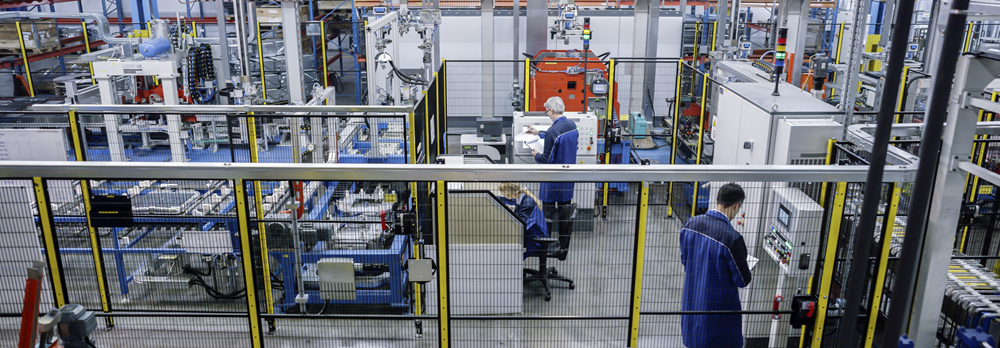Understandably perhaps, machine guarding is not something at the forefront of operations directors’ minds most of the time. In fact, in some organisations, it only becomes a priority following incidents, audit reports, or near-miss events. Evidence shows however, that a proactive approach to machinery safety provides businesses with tangible operational benefits.
Read more: Three Strategic Benefits of Effective Machine Guarding for ManufacturingWhen machine guarding becomes a cornerstone of operational excellence, business owners begin to see measurable ROI in terms of productivity and positive returns when it comes to safety and cost management.
In this blog post we outline three benefits that distinguish strategic from reactive guarding.
1. Proactive Compliance Through Strategic Maintenance Planning
In the worst cases, unplanned guard failures can initiate a cascade of effects and cause significant disruptions to work schedules. When emergency repairs become necessary, and especially if a worker is injured, production stoppages occur and associated costs can quickly escalate, while companies then face the dual challenge of maintaining and improving safety standards and operational continuity.
By contrast, strategic maintenance planning transforms this dynamic completely. By scheduling regular inspections and systematic upgrades, organisations maintain continuous PUWER compliance while integrating guarding maintenance into planned production cycles. This approach ensures equipment is “maintained in a safe condition”, as the regulations stipulate, while avoiding the costly surprises of reactive and unplanned repairs.
When guards fail or become defective, hazardous situations can arise where operators bypass compromised safety systems to in order to keep up targeted production output. Worse still in our experience, are the factories where machinery which “routinely fails”, leading to workers removing guards entirely – something which places the employer in very obvious breach of regulations and with potentially horrendous consequences.
When we start working with a new customer, they are often positively surprised that a proactive approach to machinery safety can actually reduce annual maintenance costs. This of course has positive implications for productivity and even competitive advantage.
PUWER regulations 1998 and Supply of Machinery (Safety) Regulations 2008 establish clear frameworks for equipment safety management. Organisations building maintenance strategies around these requirements create foundations for reliable, legally compliant operations while avoiding regulatory penalties and operational disruption.
2. Enhanced Safety Culture Through Operator-Centred Design
In our experience, frequent guard bypassing indicates design inadequacy rather than operator non-compliance. Effective guarding begins with an understanding that it must accommodate real-life operational requirements while maintaining protective functionality.

Over the years, we’ve seen how businesses which value operator insights into the realities of shop-floor machinery safety requirements achieve higher compliance rates and reduced safety incidents. Machine operators have day-to-day practical knowledge of the equipment they use, workflow patterns and the practical safety challenges. Before we design any machinery guarding, we always strongly recommend that both operators as well as managers are actively consulted.
In our experience, when operators are consulted in the guarding design process, the result is a dramatic and usually near total reduction in bypass incidents. Solutions are implemented that workers understand, respect, and can adhere to without compromising productivity.
The benefits of consulting with the workforce go beyond immediate and measurable safety benefits however, since collaborative approaches also strengthens organisational safety culture. When management and the consultants they employ demonstrate genuine interest in worker input, valuing their expertise and practical experience, employee engagement throughout the organisation increases significantly. This of course can be instrumental in the ongoing sustainability of the safety measures implemented as well as having a positive effect on morale and so also productivity.
Consideration of the practical ergonomics in guarding design delivers genuine operational benefits. Well-designed guards facilitate efficient material handling, reduce unnecessary production interruptions and support consistent workflow. These then translates directly into productivity gains and increased operational efficiency.
3. Operational Excellence Through Integrated Safety Management
PUWER 1998 and the Supply of Machinery (Safety) Regulations 2008 establish the minimum legal requirements for machinery safety. However, when the management of a business recognises these regulations as foundations, rather than ceilings, for safety standards in their manufacturing operation, operational excellence becomes achievable.
Adopting an integrated approach to safety management means combining proactive maintenance strategies with operator-centred design principles to create comprehensive approaches that exceed regulatory minimums. In this way industrial safety is no longer simply a cost centre and becomes a means of achieving greater efficiencies and in the long term, competitive advantage.
Operational improvements typically comprise increases in machine uptime, reductions in maintenance labour and increases in worker productivity. Together, these can represent a not insignificant operational transformation.
The financial implications extend beyond direct operational improvements however. Inadequate guarding creates hidden costs which can include insurance premium increases following incidents of guarding failure, emergency retrofitting requirements, potential workforce churn and even reputational impacts with customers who prioritise suppliers who can demonstrate a positive approach to corporate and social responsibility, in this instance encompassing workplace health and safety.
Modern safety systems typically include fixed guards, interlocked guards, adjustable guards, self-adjusting guards and can extend to include light curtains. Such systems when implemented managed strategically, typically have extended service lives, ensuring upfront investments deliver sustained returns through extended product lifetimes.
Strategic Implementation Framework
By integrating regulatory compliance with operational optimisation, organisations can transform machine guarding from something which is dealt with through reactive maintenance into a strategic advantage. This approach ensures safety doesn’t just protect but actually enhances performance.
Working with experts such as Safety Systems Technology, manufacturers can use regulatory compliance to provide a framework for building safety management systems which become a cornerstone of continuous improvement. From initial assessment and operator-led design to proactive maintenance, machinery guarding morphs from being a necessary expense into a strategic investment. The result is not only enhanced protection but also significant returns in productivity, operational resilience, a more engaged workforce and a stronger competitive edge.
Get in touch today to discuss your machinery safety requirements.

